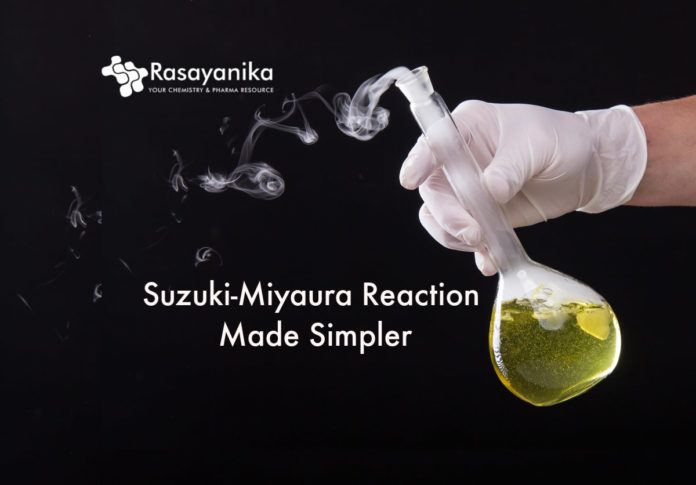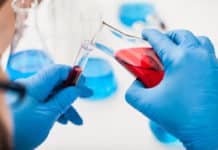Simpler Method For Suzuki-Miyaura Reaction Discovered In Japan
A reaction between aryl halides and organic boronic acids that leads to the synthesis of ‘biaryl’ compounds is called the Suzuki-Miyaura reaction. This is a well-known reaction as the biaryl compounds are important components of various chemical products and drugs.
Two aryl molecules are cross-coupled or combined in this reaction which gives the name cross-coupling reaction. It is crucial to optimize the reaction as the organic aromatic molecules formed from the reaction has many applications in solvents and drugs.
This is why a team of scientists from Tokyo University of Science under Prof Shinichi Saito and Junior Assoc Prof Yuichiro Mutoh published a new study in ACS Catalysts. The team tried to make the reaction more efficient.
In the Suzuki-Miyaura reaction, a protected organic boronic acid with a masking group is usually used as a precursor for boronic acid. But it does not take part in the reaction because of its low reactivity. Therefore, removal of the masked group in an additional step is crucial to provide the latent boronic acids that can take part in subsequent Suzuki-Miyaura reaction.
Scientists believed that direct use of protected boronic acid in a Suzuki-Miyaura reaction
would be highly desirable in terms of economy and number of steps. But methods to use protected boronic acids without removing the masking group first in a Suzuki-Miyaura reaction was unknown till now. The scientists from Japan decided to find a way.A palladium catalyst, two starting aryl molecules and a base was required for the process. They wanted to verify if the reaction can proceed with the protected molecule. They first studied the effect of various bases in the reaction. They saw a high yeild of products when they used a particular pottassium base called KOτ-Bu. So they tried using various palladium-based catalyst systems and observed a similar yield. This suggests that palladium-based catalysts can be used for cross-coupling reactions. They concluded that if one was to use protected boronic acid directly, KOτ-Bu base plays a crucial role.
The team conducted ‘control’ experiments after a dozen successful Suzuki-Miyaura reactions with high yield to check for other variables and to gain insight into the underlying mechanisms of the KOτ-Bu base. They uncovered an intermediate compound involving the KOτ-Bu base and the boronic acid reagent when they checked if the chemical species were present in the reaction mixture before the reaction was complete.
The scientists confirmed using single-crystal X-ray diffraction analysis and NMR spectroscopy that it is the use of KOτ-Bu as the base that plays a crucial role in the success of the reaction. It enables the formation of essential active borate in the reaction.
The scientists propose a novel way of minimizing the steps required to use protected boronic acids. The new method provides insights into the Suzuki-Miyaura reaction.
The study was chosen to be on the cover of ACS Catalysis January 2020 issue owing to its novel findings. The study will simplify the synthesis of complex molecules which will help people to get benefits from advances in the chemical sciences.

















































